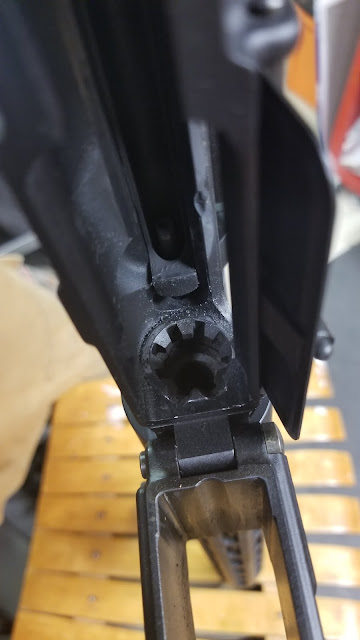Modern Optics

Introduction:
Optics have come a long way in terms of their recreational and military use. They've gone from specialized equipment for certain jobs, to being standard issue in many militaries worldwide. When it comes to the question of what optic to put in your rifle, depending on what role the rifle is going to be playing, there are a few different options: red dot sights, low power scopes, or low-power variable optics (LPVOs). Each of these has distinct advantages and disadvantages depending on what you want to do with them, but all of them give a comparative advantage against a rifle with iron sights.
Details:
Red Dots:
Red dot sights are the bread and butter in terms of optics for most shooters. With the advent of modern red dot sights, there is really no reason not to use one when your other option is irons. Chinese-manufactured optics have gone up in quality to the point that they are generally acceptable for use and will hold up under most conditions. There is still something to be said for staking your life on something more expensive, but for recreational purposes, a $150-$250 red dot works just fine. Battery life, in many cases, is no longer an issue either, with companies manufacturing sights with >20,000 hours of battery life, or including a solar panel on the top of the sight.
| Source: http://russianoptics.net/ACOG.html |
Red dot sights provide distinct advantages over iron sights. Although they do not provide any magnification, they generally allow for quicker target acquisition compared to irons. Iron sights rely on the shooter needing to alight the front and rear sight over a target prior to firing. A red dot streamlines this process. All a shooter needs to do is place the dot over the target and pull the trigger. This allows a shooter to rapidly put rounds on target. There is no need to worry about aligning sights when the only reference that is needed is an easy-to-see dot. The relative inexpensiveness of red dots, combined with their decent build quality in most cases, I would argue lends iron sights functionally obsolescent. Modern rifles such as the Desert Tech MDR, instead of shipping with iron sights, give an option of including a small red dot instead.
Although good red dot sights can remain effective out to a few hundred yards, they are best suited for closer shots. For this reason, many police officers opt to use red dots for their purposes, and many civilians utilize them in a home-defense role.
Low Power Scopes:
Low power scopes typically provide 4x magnification or less. Popular scopes such as the Trijicon ACOG would fit into this category. Low power scopes provide a distinct advantage in accuracy potential at range. Because of this, low power scopes are standard issue for many units in the US military. Some magnification, combined with sufficient eye relief, allows a shooter to acquire a target at range more quickly than with irons or a red dot with no magnification. Low power scopes also do not rely exclusively on battery power to be effective. Although many rely on battery for an illuminated reticle, the reticle itself stays no matter what.
/arc-anglerfish-arc2-prod-mco.s3.amazonaws.com/public/AFCA6NDK4ZGEPG5NGM4OWVUB2Q.jpg)
These scopes are also fairly durable. They are on par with red dots in terms of durability. They are not very large scopes, and typically have a more rugged design. However, these scopes do have some disadvantages. For starters, the magnification, although helpful at range, can be a detriment in close quarters. Too much magnification at close range gives far too small of a field of view to be effective. Many have sought to solve this problem by mounting a small red dot sight on top of the scope itself. This provides an optics platform that can move from a magnified sight, to zero magnification just by the shooter shifting where they are looking. This is an effective, but tall and bulky solution. For a more elegant solution, LPVO's have become much more popular recently.
Low Power Variable Optics:
 |
| Source: https://www.trex-arms.com/store/vortex-razor-hd-e-1-6-scope/ |
LPVO's are the new-kid-on-the-block in the optics world. LPVO's allow a shooter to have a 1x optic with a wide field of view, and then rotate a ring or lever to increase the magnification, typically to 6x or 8x. The idea of these scopes is to provide some of the advantages of both red dots and low power scopes. They are more easily adaptable for different ranges. In my opinion, they are kind of like the WD-40 of optics. They fulfill both roles OK, but neither one especially well. They are popular in competitive shooting circles, where some courses of file will involve both close and long range, but not as popular in militaries.
There are also some durability concerns with LPVO's. They have more moving parts than either red dots or low power scopes, and they typically have thinner scope bodies from what I've seen.
Conclusion:
All in all, the best optic type for you is going to depend on the role that the rifle is going to play for you. Personally, I just have a red dot on my go-to rifle. I don't shoot out to long range, so I don't really have a need for anything more. Optics are some of the easiest upgrades you can make to your rifle to give you a solid advantage. Back-up irons are a decent idea in some circumstances, but more often than not stay unused, since the quality of optics has improves so much.

Comments
Post a Comment